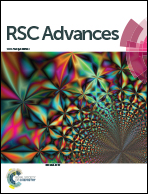Pancreatic cancer therapy using an injectable nanobiohybrid hydrogel
Abstract
Nanobiohybrid hydrogels, which are composed of inorganic nanoparticles and biodegradable polymeric hydrogels, have received special attention in the field of drug and protein delivery. These systems exploit the unique advantages of each component to improve the efficacy of the therapeutic agents and minimize undesirable side effects. The objective of this study was to develop a gemcitabine-loaded nanobiohybrid hydrogel to overcome the limitations of this anticancer drug, such as the very short half-life of gemcitabine (GEM) in plasma, the systemic toxicity from high-dose therapy, and the need for repeated administration during treatment. The proposed injectable nanobiohybrid hydrogel for controlled release of GEM was prepared through intercalation and adsorption of GEM to interlayer galleries and surfaces of montmorillonite (MMT) nanoparticles (forming MMT–GEM complexes), followed by the dispersion of the MMT–GEM complexes into the injectable, biodegradable, temperature-sensitive poly(ε-caprolactone-co-lactide)-b-poly(ethylene glycol)-b-poly(ε-caprolactone-co-lactide) hydrogel. The MMT–GEM complex and the nanobiohybrid hydrogel were characterized by X-ray diffraction analysis, particle size and zeta potential measurements, Fourier transform infrared spectroscopy, and scanning electron microscopy. Improvements in the properties of nanobiohybrid hydrogel in comparison with the pristine hydrogel were confirmed through sol–gel phase transition diagram, rheological measurement, and in vivo stability. The non-cytotoxicity of the nanobiohybrid hydrogel was proven by MTT assay using the 293T cell line. Compared with the pristine hydrogel, the in vitro GEM release from the nanobiohybrid hydrogel showed a considerably prolonged GEM release time and a much lower initial burst. The antitumor efficacy studies on pancreatic tumor-bearing mice revealed a significant inhibition of tumor growth. Hence, these findings demonstrate that the nanobiohybrid hydrogel is a desirable carrier for controlled release of GEM in the treatment of pancreatic cancer.


 Please wait while we load your content...
Please wait while we load your content...